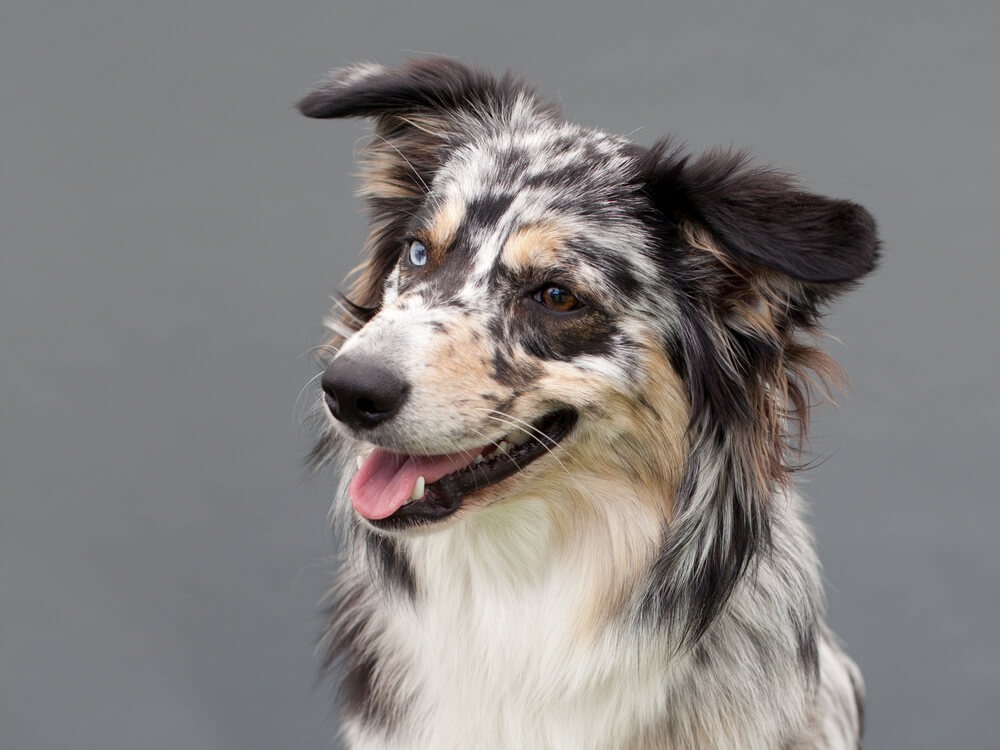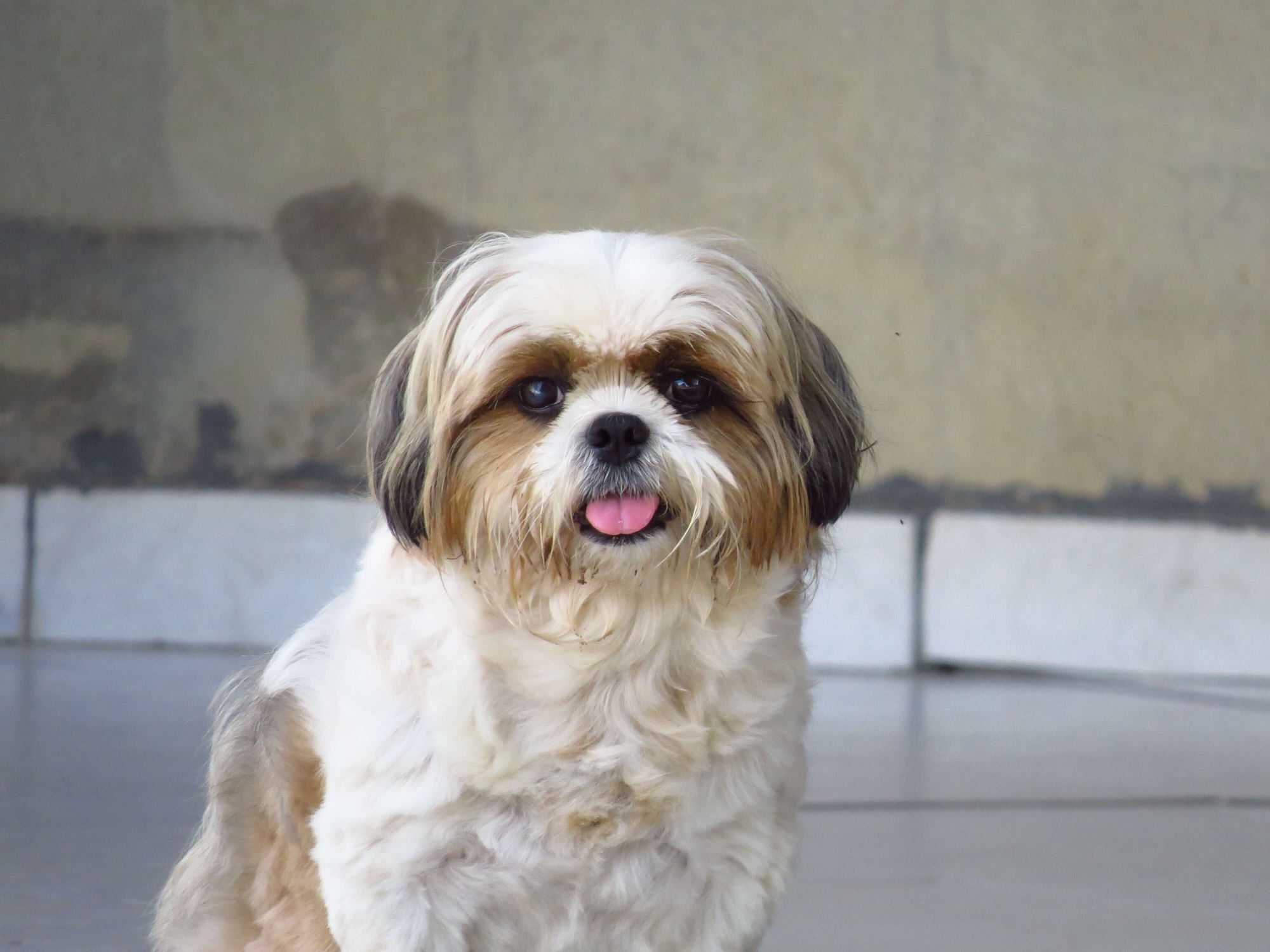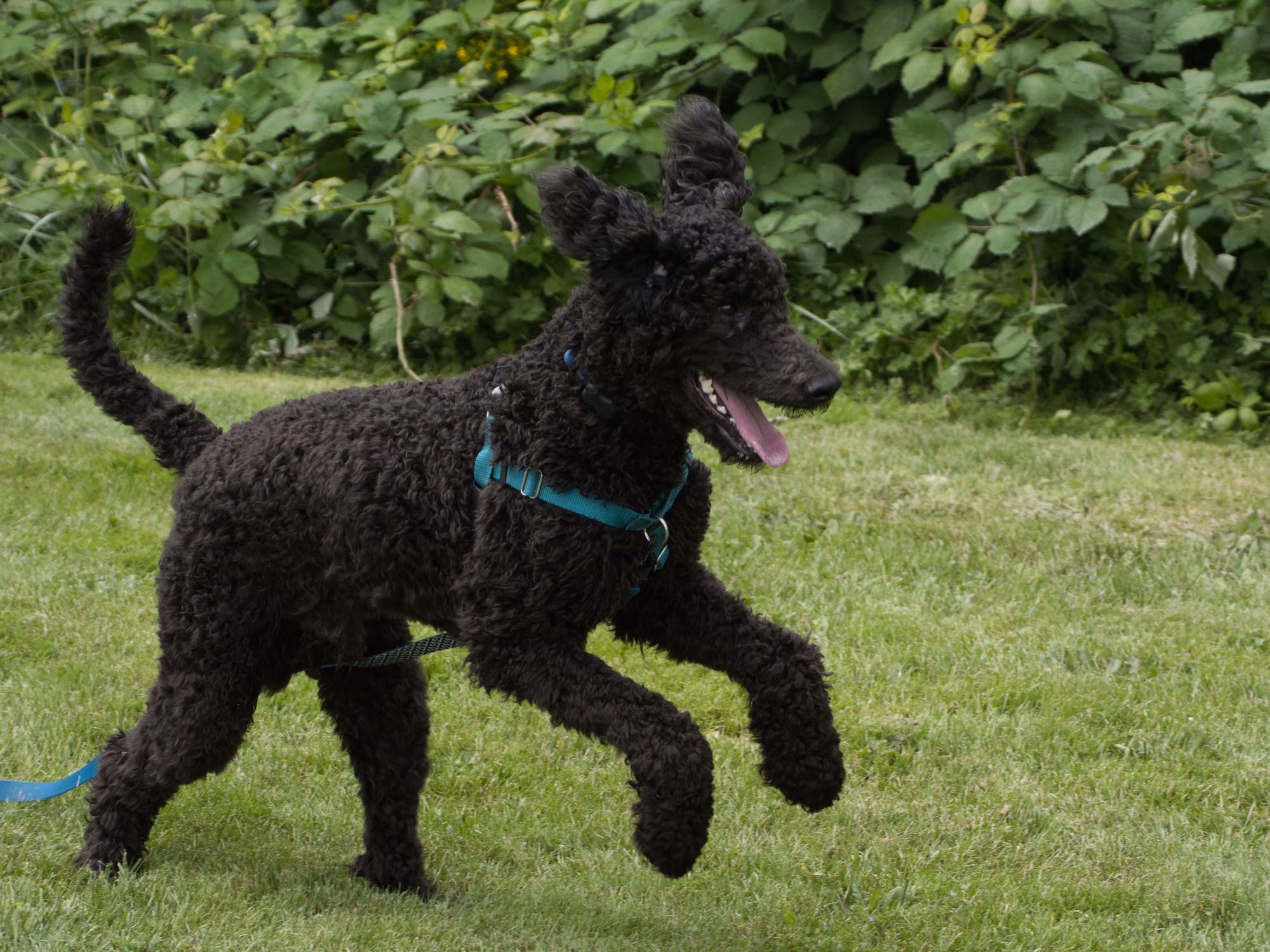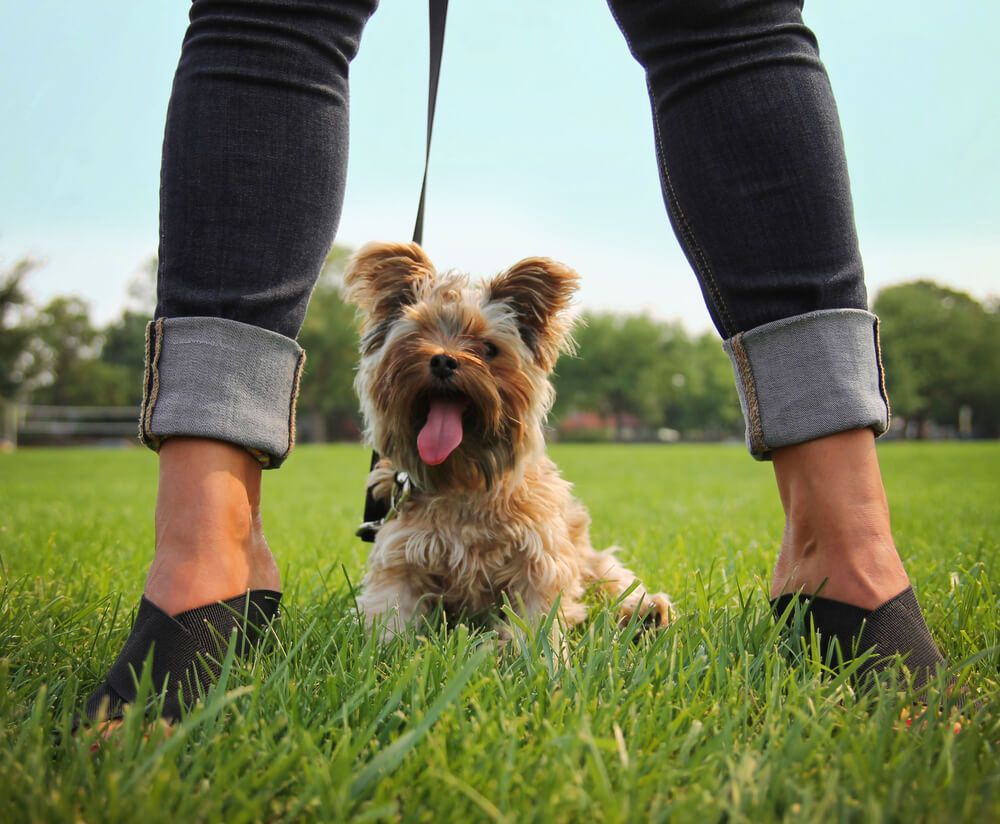Hey Ollie blog readers! We’re offering you an exclusive 60% OFF your starter box! Try now!
Looking to add a new member to your family? Learn about the Australian Shepherd as this might be the right fit for your next pet.
While you might assume these dogs originated down under, the Australian Shepherd, or Aussie as they’re known were originally bred in the western United States beginning in the 1840s.
According to the Australian Shepherd Club of America, “The Australian Shepherd is a well-balanced dog of medium size and bone. He is attentive and animated, showing strength and stamina combined with unusual agility. Slightly longer than tall, he has a coat of moderate length and coarseness with coloring that offers variety and individuality in each specimen. An identifying characteristic is his natural or docked bobtail. In each sex, masculinity or femininity is well defined.
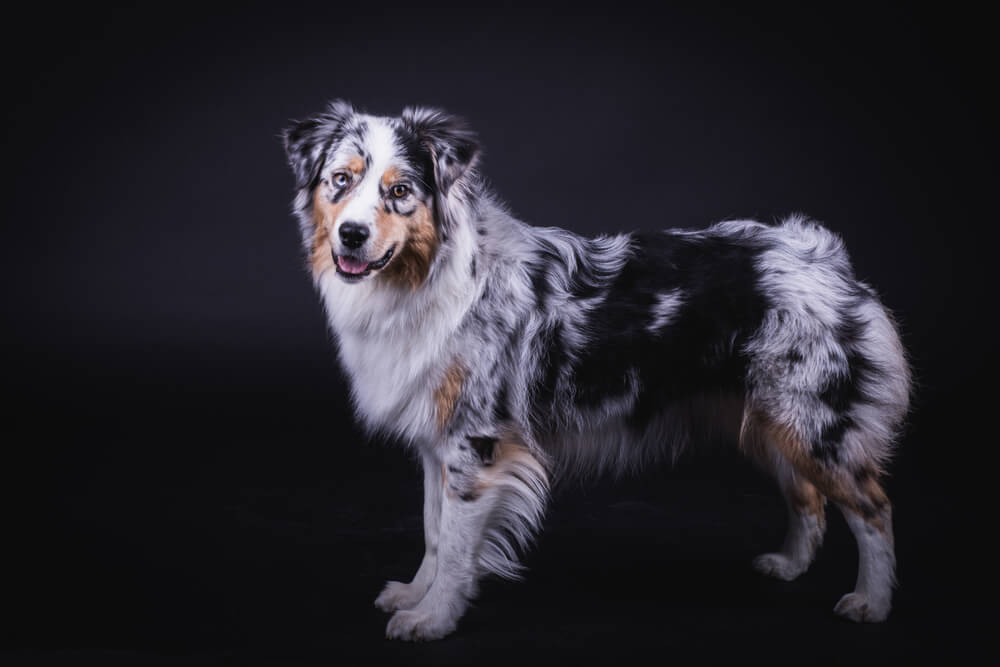
Three Characteristics of Australian Shepherds
-
- They enjoy workingAustralian Shepherds are dogs that were bred to work. They can do a variety of “jobs” from herding cattle or sheep to competing in sports like flyball or agility. These dogs were born and bred to work hard. If you’re considering adding an Aussie to your family you’ll want to be certain to take this into consideration and have some “work” for your dog to do.
- They’re very intelligentNot only do Australian Shepherds work hard, but they also have the brains to back it up. They are intelligent, highly trainable dogs who learn quickly. They are eager to please and want to learn. You can teach these dogs many commands and even some tricks as they like to learn and work.
- They have a distincive lookMost people find that Australian Shepherds are attractive dogs. Their medium to long coats can come in a variety of colors. These include black, red, blue merle, and red merle. All four of these colors can be seen with or without tan, and with or without white markings. Aussies have a thick, medium-length coat that can be straight or slightly wavy. The back of their legs has feathering and they have a lush mane around their necks. The standard Aussie tail is about 4 inches long. An Aussie born with a longer tail may have its tail docked. If you’re considering showing your dog, you should also consider breed standards and bloodline when choosing your pup. Even if you never set foot in the show ring, when you walk your dog you may get stopped a lot as people love to admire these dogs.
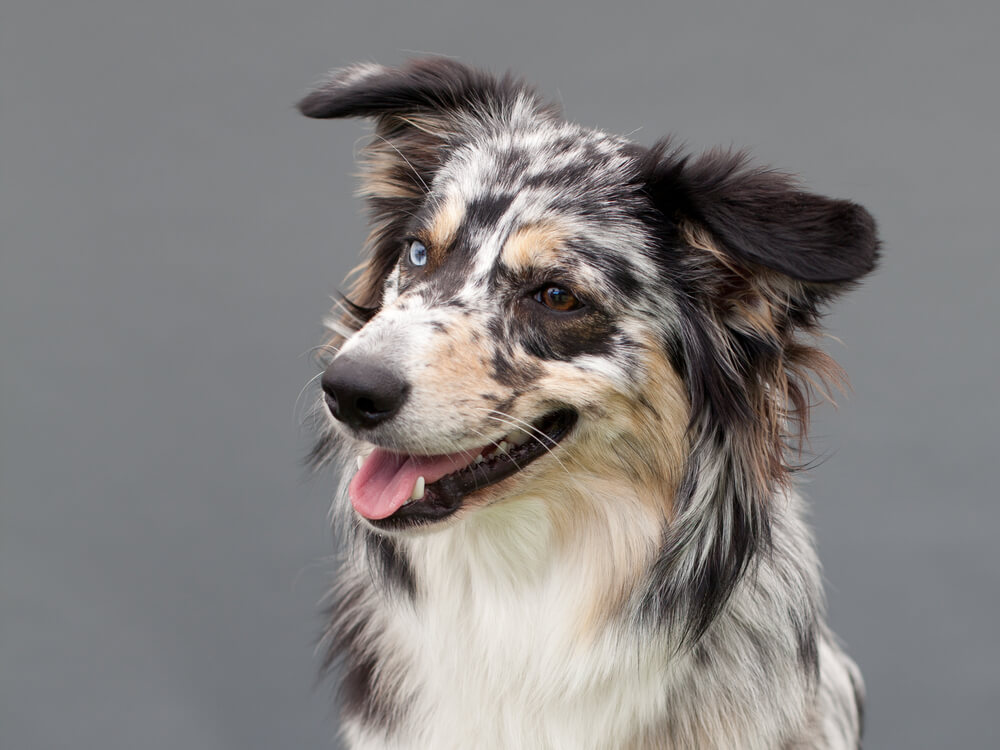
Reasons an Australian Shepherd may be a good fit
-
-
- Medium size Aussies are a great size dog, not too small and not too large. On average, female Aussies weigh 40- 45 pounds and males around 55 – 60 pounds. Although they can be petite enough to get around some weight restrictions when renting an apartment, these dogs are not suited to the urban lifestyle unless they’re getting plenty of exercise.
- Athletic If you work on a farm, enjoy hiking or are looking for a partner to compete in a dog sport like agility or flyball, an Aussie might be the perfect pick. These dogs need at least an hour of exercise every day. If you compete with friends on FitBit, be ready to start your winning streak – this is a dog that will have you moving!
- Great companion If you are looking for a dog that likes kids, pets and wants to be a part of your “pack”, an Australian Shepherd might be the right choice. These dogs are great with kids and get along with other dogs. After a long day of work, they’ll be content to join you for a movie night on the couch too.Aussies may be protective of you and your home or a little reserved when meeting new people – but they warm up quickly.
-
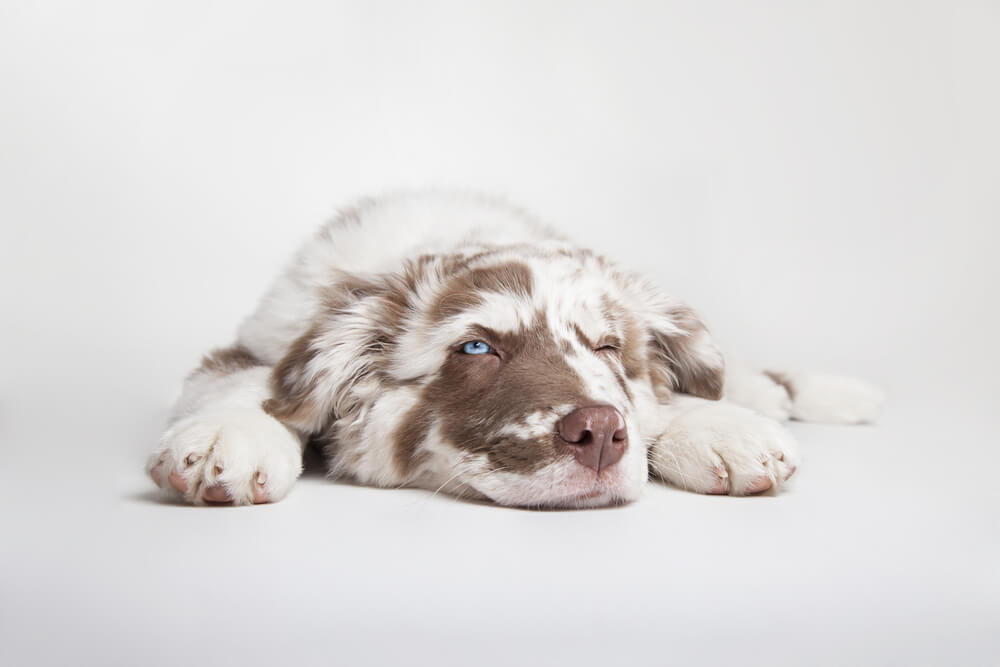
Reasons an Australian Shepherd may not be a good fit
-
- Shedding Due to the length of their coats, Aussies shed a lot and will require some investment in professional grooming. If you bring an Aussie into your home you’ll need to vacuum constantly! Be sure this is something you can keep up with. In addition, you’ll want to work with an experienced groomer to learn about how to maintain your pet’s coat and skin.
- Health issues Like other pure bread dogs, Australian Shepherds are prone to health issues. These include:
- Hip dysplasia: This is a malformation of the dog’s hip socket. It should be properly diagnosed via X-ray as you can’t always spot it with the naked eye. Breeders should always have their Australian Shepherds evaluated for this condition by the Orthopedic Foundation of America. This foundation can tell you if there is a family history of hip dysplasia, and how often it occurs.
- Elbow dysplasia: like hip dysplasia, elbow dysplasia can occur in Aussies. Make sure your breeder is evaluating parents (and pups)
Eye disorders – Including Cataracts, Colobomas, and Collie eye anomaly. Due to the possibility of eye disorders, it is important that dogs are examined by a board-certified ophthalmologist prior to breeding. Your puppy should also be examined at 6 weeks old and then annually once you’ve brought them home to ensure their eyes are healthy or to prevent issues from progressing. - Multiple drug sensitivity: This means some Aussies are hypersensitive to common medications. If your pup is diagnosed with this condition you’ll need to work closely with your vet to make sure they are well cared for and not given medications they can’t tolerate.
- Tumors and Cancer: Like many other purebred dogs, Australian Shepherds can develop tumors or other cancers. To minimize risk, learn about the medical history of your dog’s parents and grandparents, and work with your vet to make sure your pet is being adequately screened for cancer.If you want to make sure you’re bringing home a healthy pup, The United States Australian Shepherd Association offers information through their health and genetics program. Talk to potential breeders before picking your pup to make sure they’re following best practices and screening both parents and puppies as recommended.
- Lifestyle Australian Shepherds thrive on activity. A few leash walks around the block will not cut it for these intelligent and active dogs. If you aren’t into working, sporting or hiking with your pup and don’t have the time to ensure your pet is getting enough exercise this is probably not the best dog for you. Many people assume that Australian Shepherds need to live on a farm or somewhere with wide open space. While there is some truth to this assumption, some Australian Shepherds do just fine in a more urban environment. They still need a job to do and plenty of exercise. You should avoid bringing this type of dog home if you live in a small apartment though, these pups do best when they at least have a small yard to run around in.
- Can live up to 12 – 15 years If you’re not ready to care for a dog for 12 – 15 years of their life, an Aussie might not be the dog for you. This means providing adequate nutrition, medical care, vaccines, grooming, and mental and physical exercise. This is a significant investment. Each year many Aussies find themselves in shelters or rescues because people underestimated the commitment to help these animals thrive in their homes.
The Ollie blog is devoted to helping pet parents lead healthier lives with their pups. If you want to learn more about our fresh, human-grade food, check out MyOllie.com.
Tagged As:

The nutrition your dog needs,
the food they want.

Enjoying our articles? Subscribe our Newsletters and get new articles directly to your inbox
You might also like
18 September 2025
7 MINS READ
Shih Tzu Breed Guide: Shih Tzu Pros and Cons
Thinking about bringing home a Shih Tzu? This guide breaks down the breed’s personality, grooming needs, and whether it’s the right fit for your life.
21 July 2025
6 MINS READ
Poodle Breed Guide: Pros and Cons of Poodles
Curious about Poodles? This detailed Poodle breed guide breaks down the key pros and cons, plus tips on caring for Standard, Miniature, and Toy Poodles.
25 March 2025
6 MINS READ
Yorkie Dog Breed Guide: Yorkie Pros & Cons
Thinking about adding a Yorkie to your family? This Yorkie dog breed guide covers the pros and cons, care tips, and what to expect with these tiny, spirited pups.
